What is LinkedIn Lead Generation?
LinkedIn lead generation is the process of using the LinkedIn platform to identify, connect with, and nurture potential business prospects or sales leads, typically in a B2B context. It involves optimizing profiles, identifying relevant prospects, sending connection requests, and engaging with them to build relationships and generate business opportunities.
Why Generate Leads using LinkedIn?
- Professional Network: Connect with a business-focused audience.
- Targeted Marketing: Precisely reach your ideal customers.
- Credibility: Build trust through a professional profile.
- Content Sharing: Showcase expertise with valuable content.
- Networking: Connect with industry influencers.
- Lead Generation Tools: Efficiently collect lead information.
- Data Insights: Understand your audience better.
- Global Reach: Access a worldwide user base.
- Cost-Effective: A budget-friendly lead generation option.
In this comprehensive guide, We’ll explore more than 13 proven strategies to supercharge your LinkedIn lead-generation efforts in the coming year.
1. Optimize Your Linkedin Profile
Your efforts to generate leads are built on your LinkedIn profile. A well-tailored profile not only draws in potential customers but also builds reputation and trust. A professional profile photo, an attention-grabbing headline, and a statement that emphasizes your experience and the value you offer your contacts are all essential.
2. Grow Professional Network
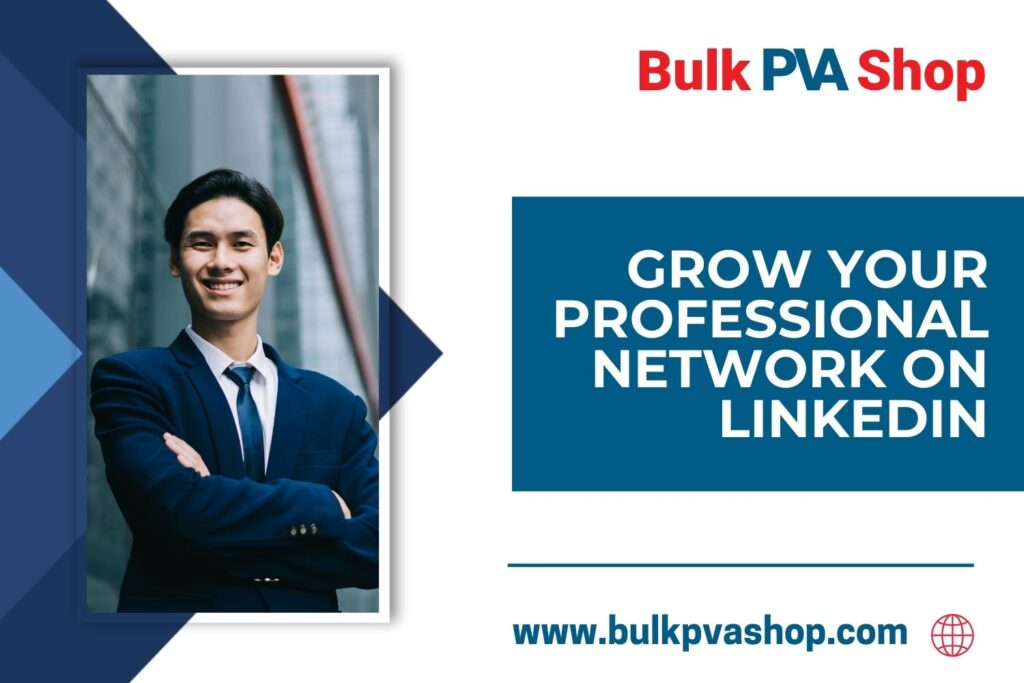
Growing your professional network on LinkedIn can open doors to opportunities, provide industry insights, boost credibility, expand your network for networking, enhance content reach, facilitate referrals, aid in recruitment, increase visibility, and offer a global perspective, all of which can advance your professional goals and career.
Here are some strategies to connect strategically with LinkedIn lead generation in mind:
Define Your Ideal Leads:
Before you start connecting with people, clearly define your ideal leads or target audience. Understand their industry, job roles, interests, and pain points. This will help you identify and connect with the right individuals.
Personalize Connection Requests:
Avoid sending generic connection requests. Instead, personalize your connection requests by mentioning something specific from their profile or explaining why you want to connect. Requests that are made specifically are more likely to be granted.
Engage with Content:
Engage with the content shared by your connections and potential leads. Like, comment on, and share posts that resonate with you or are relevant to your industry. This increases your visibility and starts conversations.
Send Personalized Messages:
After connecting with someone, send a personalized message to initiate a conversation. Avoid immediately pitching your product or service; instead, focus on building a relationship.
Remember that effective lead generation through strategic connections on LinkedIn is not about quantity but quality. Building meaningful relationships with potential leads takes time and effort, but it can yield valuable business opportunities and long-term partnerships.
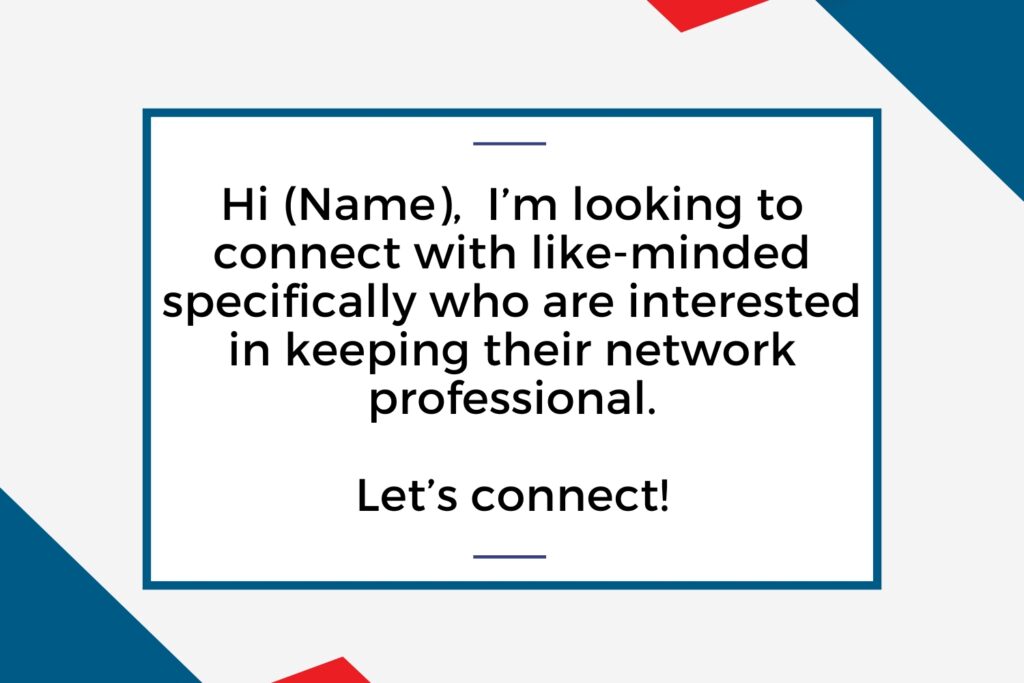
3. Content Marketing
A strong lead generation strategy is content marketing. Here’s a step-by-step guide on how to combine content marketing with LinkedIn lead generation:
Define Your Target Audience:
Before creating content, you need to understand your ideal customers Define the needs, interests, and demographics of your target audience. This information will guide your content creation and help you create content that resonates with your audience.
Create High-Quality Content:
Produce content that provides value to your audience. Blog entries, eBooks, whitepapers, info graphics, films, webinars, podcasts, and other content are examples of this. Ensure that your content is informative, well-researched, and addresses the specific needs and pain points of your target audience.
Promote Your Content:
Share your content on various platforms, including your website, blog, social media, email newsletters, and industry-specific forums or communities. Leverage social media advertising and paid promotions to increase reach.
Monitor and Analyze:
Track the performance of your content using analytics tools like Google Analytics and marketing automation platforms.
Track important data like interaction, traffic, and conversions. Refine your content approach using this information.
4. Strong Targeting Filters
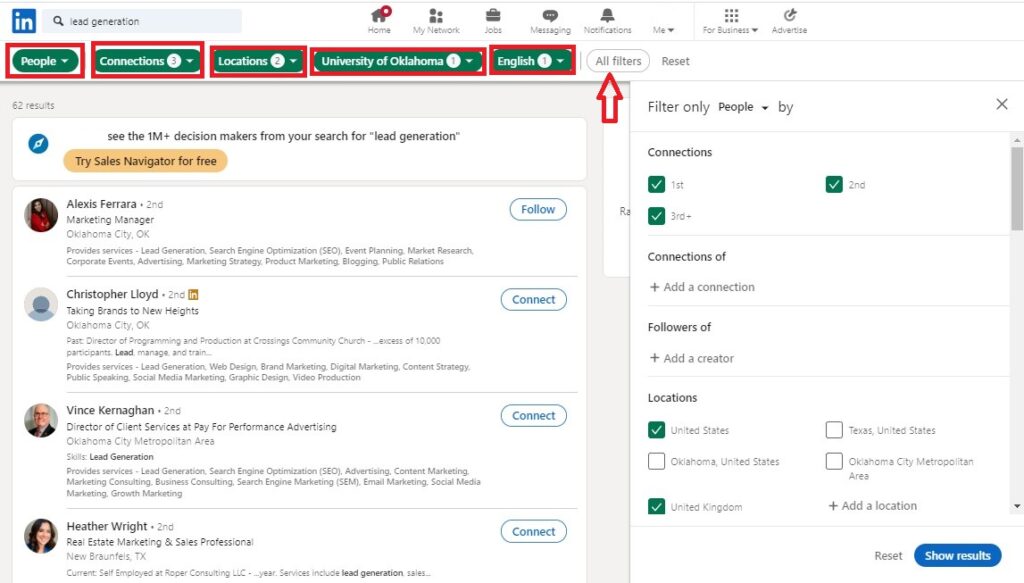
Strong targeting filters on LinkedIn work by allowing you to refine and narrow down your audience when creating advertising campaigns or searching for potential connections. These filters enable you to specify the characteristics and criteria of the people you want to reach or connect with on the platform. For example, you can target users based on factors such as:
- Location: Choose specific regions, cities, or countries where your target audience is located.
- Job Title: Target individuals with particular job titles or roles relevant to your campaign or networking goals.
- Industry: Select specific industries or sectors that align with your business or objectives.
- Company Size: Define the size of companies (by employee count) that you want to reach.
- Seniority Level: Focus on decision-makers or specific levels of seniority within organizations.
- Skills: Target users with specific skills or expertise that match your needs.
- Education: Narrow down your audience based on their educational background.
- Groups: Connect with or advertise to members of particular LinkedIn groups related to your niche.
- Interests: Reach users who have shown interest in specific topics or industries through their LinkedIn activity.
These filters help ensure that your content, ads, or connection requests are seen by the most relevant and valuable prospects or connections, increasing the likelihood of achieving your desired outcomes on LinkedIn.
5. Engage Actively
“Engage actively” is a critical strategy in the realm of lead generation and networking. It emphasizes the importance of actively participating and interacting within your professional network to build relationships, foster meaningful connections, and ultimately drive business opportunities.
Engaging actively also includes responding promptly to messages and connection requests, as well as joining discussions in LinkedIn Groups or other networking platforms. By sharing your expertise, offering valuable input, and engaging thoughtfully, you can establish yourself as a knowledgeable and reliable professional within your industry.
In essence, “Engage Actively” serves as a reminder that networking and lead generation are not passive activities.
6. Hashtags for Lead Generation
Using hashtags for lead generation on LinkedIn can be an effective strategy to expand your reach and connect with potential leads. Here’s how to utilize hashtags for this purpose:
- Research Relevant Hashtags: Research Relevant Conduct hashtag research to find industry-relevant and popular tags that potential leads use or follow.
- Incorporate in Posts: Add relevant hashtags to your content for discoverability. Use them naturally in your posts, comments, and articles.
- Engage Actively: Interact with posts using the same hashtags. Like, comment, and share relevant content to boost visibility and networking.
- Create Branded Hashtags: Establish a unique branded hashtag. Encourage its use in discussions about your products, services, or content to track your brand’s impact and generate leads.
- Follow Trends: Stay updated by following relevant hashtags. This helps identify potential leads and engage with their content.
- LinkedIn Articles: Boost visibility in your articles by including relevant hashtags in the title and body.
- Maintain Consistency: Be consistent with your hashtag usage. Keep a list of relevant tags and use them strategically in your posts and comments.
- Analyze Performance: Leverage LinkedIn’s analytics to assess post-performance, including reach and engagement through specific hashtags. Use insights to refine your strategy.
- Direct Messaging: After engaging with users using relevant hashtags, consider sending personalized direct messages to initiate conversations and nurture potential leads.
Using hashtags effectively on LinkedIn can help you reach a broader and more targeted audience, making it easier to identify and engage with potential leads interested in your industry or offerings.
7. Publish Articles
Publishing articles on LinkedIn can be a potent tool for lead generation. Here’s how to optimize your articles for this purpose:
Strategic Topics:
Choose topics that resonate with your target audience and address their pain points or interests. Articles that offer solutions or insights into industry challenges tend to attract potential leads.
Write an Article:
On the LinkedIn homepage, you’ll find the “Write an Article” option. Click on it to start creating your article.
Keyword Optimization:
Research relevant keywords and incorporate them naturally into your article. This can improve the discoverability of your content when users search for related topics.
Formatting:
Choose a catchy headline and include images, videos, or other multimedia elements to enhance your content Also use subheadings, and bullet points to make your article easy to read.
Clear Call-to-Action (CTA):
Include a clear and relevant CTA at the end of your article. This could be an invitation to connect, subscribe to your newsletter, or download a valuable resource. The CTA should guide readers toward taking the next step.
Engagement and Sharing:
Encourage readers to engage with your article by asking questions, inviting comments, and prompting them to share it with their network.
LinkedIn Hashtags:
Include industry-specific hashtags in your article to enhance its visibility within relevant LinkedIn communities. This can help you reach a broader audience, including potential leads.
Promotion:
Share your articles across your LinkedIn network, relevant groups, and other social media platforms to maximize exposure.
Analytics and Refinement:
Monitor the performance of your articles using LinkedIn’s analytics. Use this data to refine your content strategy and focus on topics that resonate most with potential leads. By consistently publishing valuable, keyword-optimized articles on LinkedIn and actively engaging with your audience, you can effectively use this platform as a lead-generation tool.
8. Engage in LinkedIn Groups
You can either join an established group or create your own. We recommend focusing on smaller, well-moderated communities.
Within these groups, you can actively participate in discussions, provide assistance, address inquiries, and share valuable resources to benefit fellow group members.
9. LinkedIn Sales Navigator
For LinkedIn lead generation, a sales navigator is the best way. LinkedIn Sales Navigator is a premium subscription service offered by LinkedIn, designed specifically for sales professionals, marketers, and business development teams.
The primary features of LinkedIn Sales Navigator can be summarized in the following points:
Advanced Lead Search: Sales Navigator offers robust search filters, enabling users to pinpoint ideal leads based on criteria like industry, location, company size, job function, and more.
Lead Recommendations: The platform provides automated lead recommendations, leveraging algorithms to suggest potential leads and accounts that match your target audience.
Real-time Updates: Users receive real-time insights on their leads, allowing them to stay informed about job changes, company updates, and relevant news, facilitating more timely and personalized outreach.
InMail Messaging: Sales Navigator includes a set number of InMail messages, a valuable feature for direct communication with prospects, even if you’re not connected.
Custom Lists: Users can create and organize custom lead lists, making it simpler to manage and engage with specific segments of their target audience.
TeamLink: This feature helps leverage your team’s connections, allowing you to tap into a broader network to discover warm introductions and shared connections with potential leads.
CRM Integration: Sales Navigator seamlessly integrates with various Customer Relationship Management (CRM) platforms, streamlining the process of saving leads and tracking interactions.
Sales Insights: The platform provides detailed analytics and engagement metrics to help sales professionals measure the effectiveness of their outreach and refine their strategies.
Mobile Accessibility: Sales Navigator offers a mobile app, enabling users to stay connected and engaged with their leads while on the go.
Lead Inclusion in Search Results: Subscribers get preference in LinkedIn’s search results, increasing their visibility and chances of being discovered by potential leads.
10. Optimize Company Page
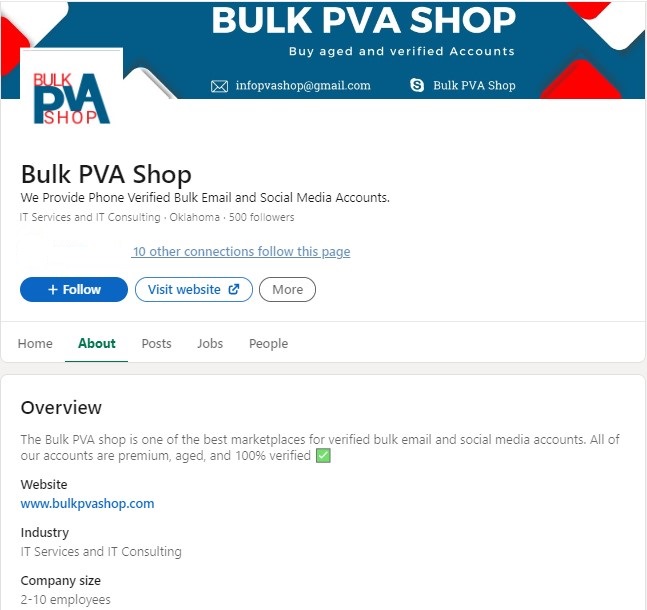
To optimize your LinkedIn Company Page for lead generation, follow these steps:
- Complete the page: Fill out your Company Page with a professional image, cover, and compelling description. Include contact info and your website link.
- Use Keywords: Incorporate relevant keywords in your description for better discoverability.
- Highlight Value Proposition: Clearly state how your products/services benefit your audience.
- Publish Engaging Content: Regularly share informative content like articles, updates, and videos.
- Add a Call to Action (CTA): Encourage users to take action in your posts.
- Showcase Client Success: Share case studies and testimonials to build trust.
- Leverage Employee Advocacy: Encourage employees to link to your page and share updates.
- Engage with Followers: Respond to comments and messages promptly.
- Use LinkedIn Ads: Target demographics and run lead generation campaigns.
- Utilize LinkedIn Events: Promote webinars or conferences.
- Monitor Competitors: Stay aware of competitors’ strategies for differentiation.
Optimizing your LinkedIn Company Page for lead generation involves a mix of professional presentation, engaging content, and audience interaction.
11. Lead Generation Forms
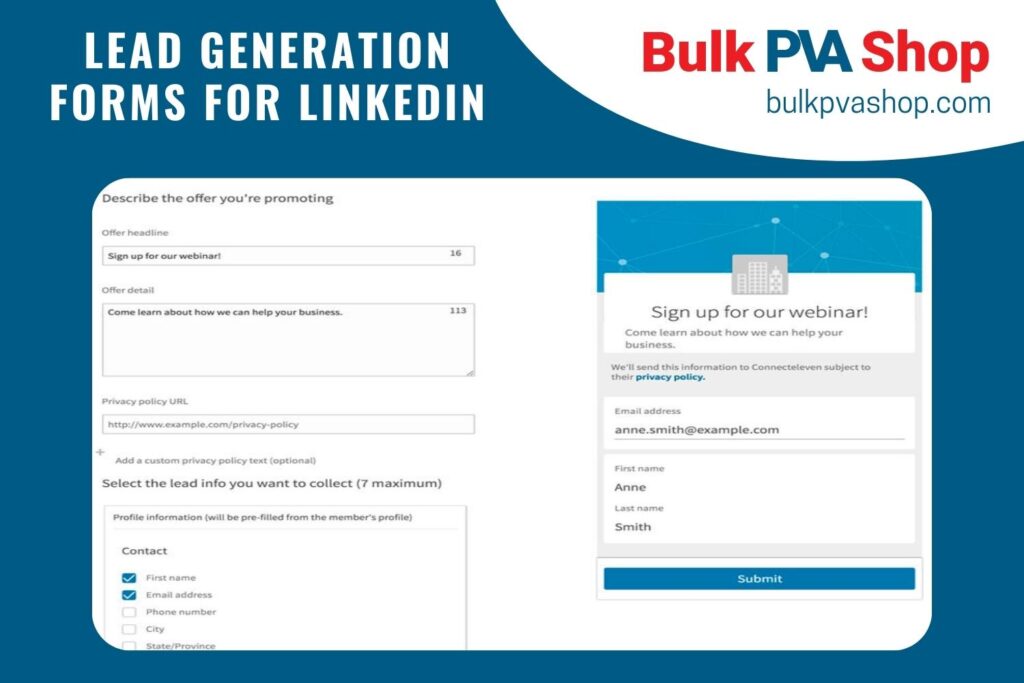
Lead generation forms are a crucial component of online marketing and sales strategies. These forms are designed to collect valuable information from potential customers or prospects, allowing businesses to follow up with them and nurture them through the sales funnel. Here’s an overview of lead generation forms and how to use them effectively:
Form Elements:
- Company Information: For B2B, gather data like company name, industry, and size.
- Demographics: Understand your audience with questions about job title, location, or age.
- Interests: Ask about specific interests or preferences related to your products or services.
- Custom Questions: Tailor forms to your needs with unique questions.
Landing Pages:
Host lead generation forms on dedicated landing pages. Ensure these pages are visually appealing, load quickly, and have a compelling copy that explains the value of providing information.
Clear Value Proposition:
Clearly communicate what users will receive in return for filling out the form, whether it’s an eBook, webinar access, newsletter subscription, or something else.
Minimal Fields:
Keep forms concise. Asking for too much information can deter users. Balance data collection needs with user convenience.
12. LinkedIn Ads
Consider using LinkedIn ads to target specific demographics, industries, or job titles. Sponsored content and InMail ads can be effective for lead generation.
LinkedIn’s B2B ads are quite successful. Because LinkedIn enables you to tailor the ads based on your target market and their expressed interest in your goods and services, this is true.
If you need bulk LinkedIn accounts for LinkedIn lead generation, click here to buy them at a cheap rate.
13. LinkedIn Events
Host webinars, workshops, or networking sessions using LinkedIn Events. These events provide an excellent opportunity to connect with potential leads and showcase your expertise.
When LinkedIn was primarily used for job searching, events were less frequent, but now the website has a thriving community. LinkedIn events are a fantastic opportunity to expand your network and learn new things on a regular basis. You can get the chance to impart your expertise and thoughts to other industry professionals if you take part in an event. While you might not get spectacular results right away with this strategy, you will become known as an expert in your field.
LinkedIn lead generation is the best option for you if you want to generate leads free of cost.
In this whole article, I tidy to describe how to generate leads on LinkedIn.
I hope your requirements will be fulfilled to read this blog. Keep hard work and get the best result.

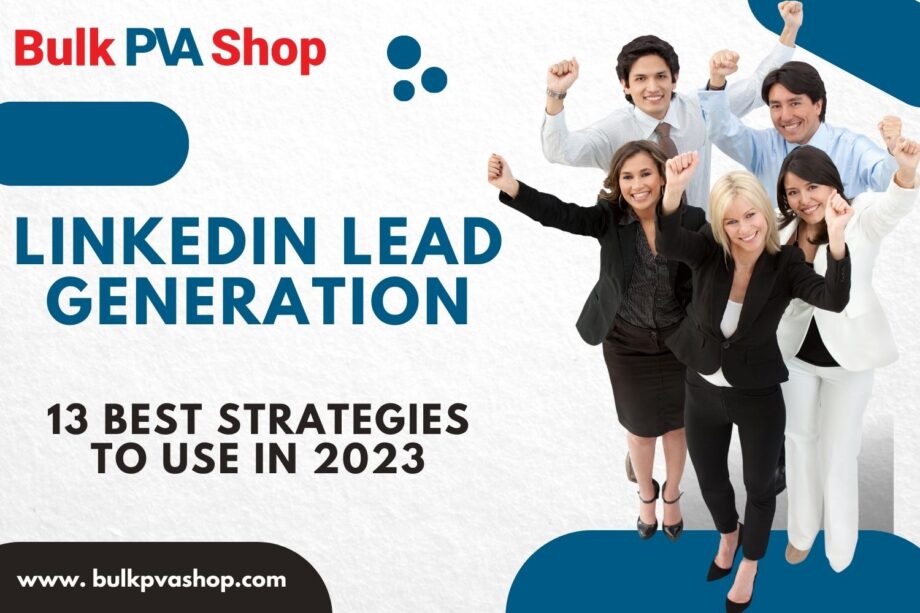
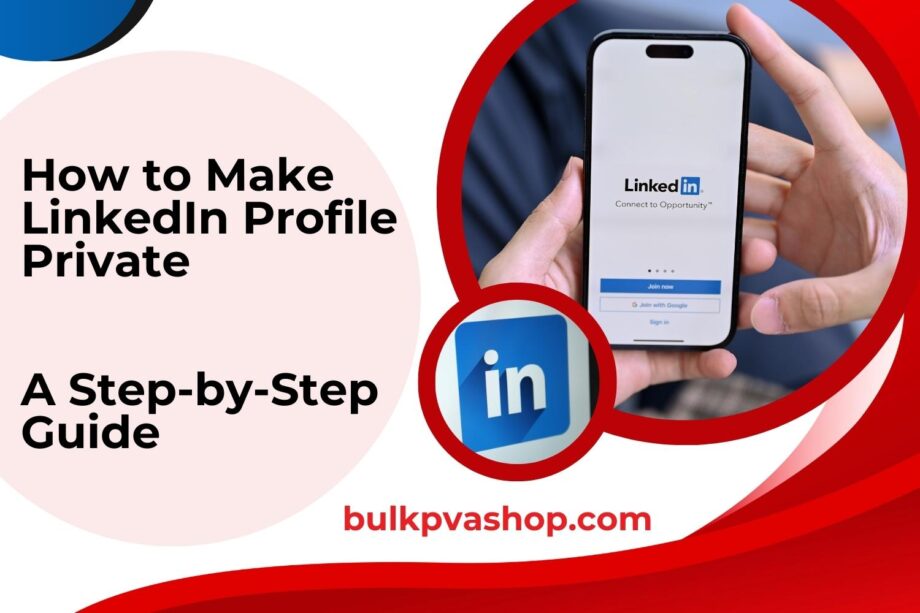
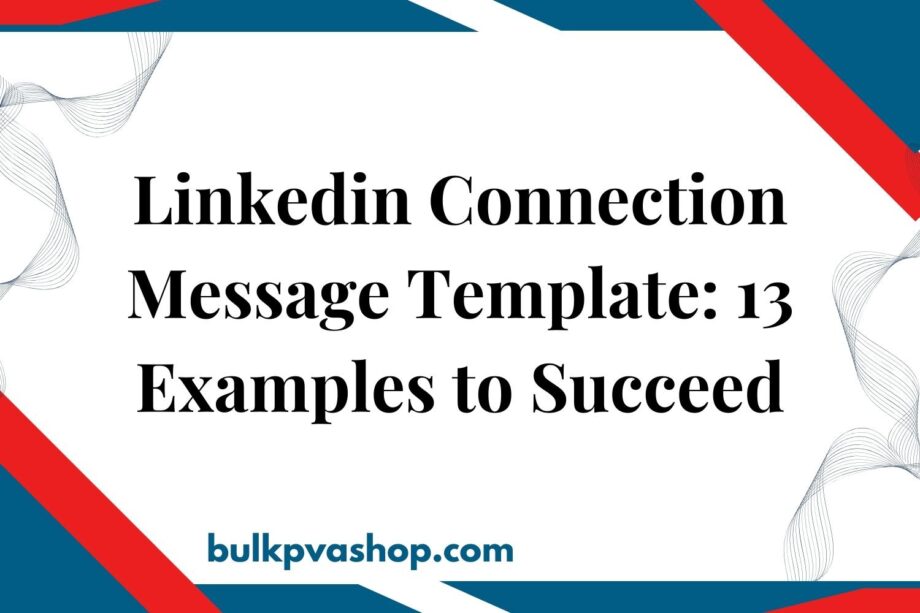
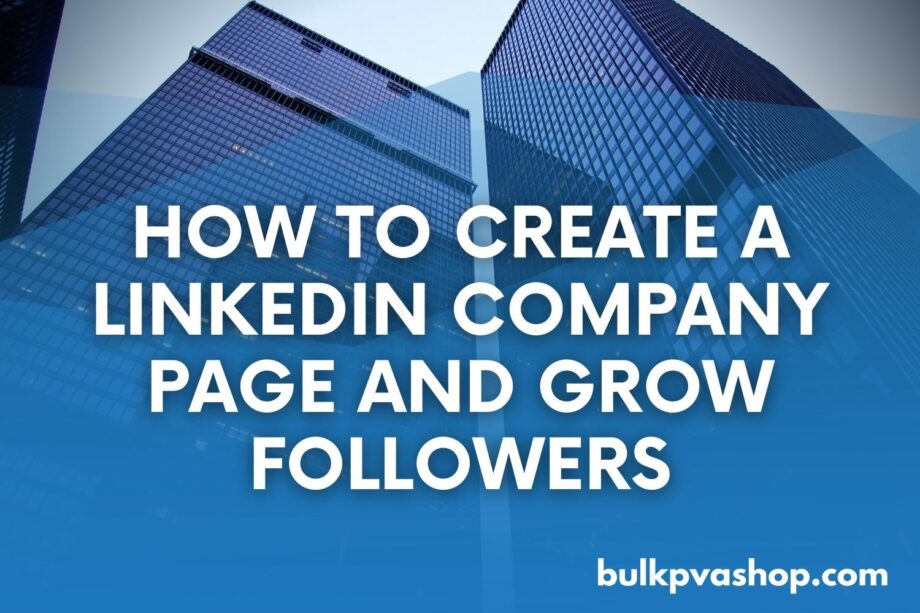
One thought on “Best 13 Strategies for LinkedIn Lead Generation 2023”